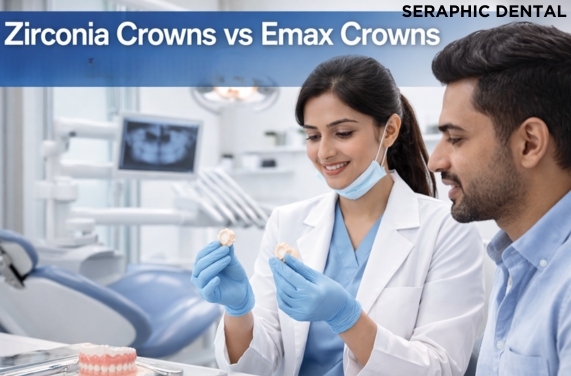Wisdom tooth removal is one of the most common oral surgeries performed by dentists. These third molars, which typically appear between the ages of 17 and 25, often cause problems due to lack of space in the mouth, becoming impacted or growing in at odd angles. If you’re facing wisdom tooth extraction, it’s normal to have concerns about what the procedure entails and how to prepare for it. This guide will walk you through what to expect before, during, and after the procedure, helping you feel more at ease.
Why Wisdom Teeth Are Removed
Not everyone needs to have their wisdom teeth removed, but there are several reasons why extraction is recommended:
- Impaction: When a wisdom tooth doesn’t have enough space to emerge properly, it can become trapped under the gums or in the jawbone, leading to pain, swelling, and infection.
- Crowding: Wisdom teeth can push other teeth out of alignment, causing crowding and disrupting the results of orthodontic work.
- Decay and Gum Disease: Due to their location at the back of the mouth, wisdom teeth can be difficult to clean, making them more susceptible to cavities and gum disease.
- Damage to Nearby Teeth: Impacted or misaligned wisdom teeth can press against adjacent teeth, potentially causing damage or increasing the risk of infection.
Before the Procedure: Preparing for Wisdom Tooth Removal
Preparation for wisdom tooth removal involves a consultation with your dentist or oral surgeon. Here’s what to expect in the lead-up to the procedure:
1. Initial Consultation
During your consultation, your dentist will take X-rays of your mouth to evaluate the position of your wisdom teeth and determine whether extraction is necessary. They will discuss your oral health, any concerns you have, and the risks and benefits of the procedure.
2. Pre-Procedure Instructions
Once your extraction is scheduled, your dentist will provide you with pre-operative instructions. These may include:
- Fasting: If you will be sedated during the procedure, you may be asked to refrain from eating or drinking for several hours beforehand.
- Arranging Transportation: If you’re undergoing sedation or general anesthesia, it’s important to arrange for someone to drive you home after the procedure, as you may feel groggy or disoriented.
- Medications: Your dentist may prescribe antibiotics if there’s an existing infection or to reduce the risk of infection post-surgery. They may also recommend pain medication to take after the procedure.
During the Procedure: Wisdom Tooth Extraction
Wisdom tooth removal is typically an outpatient procedure, meaning you’ll go home the same day. Here’s what happens during the surgery:
1. Anesthesia
Before the extraction begins, your dentist or oral surgeon will administer anesthesia to ensure you’re comfortable throughout the procedure. There are several types of anesthesia used for wisdom tooth removal:
- Local Anesthesia: Numbs the area around the tooth so you won’t feel pain but remain fully conscious.
- Sedation Anesthesia: Administered through an IV, this type of anesthesia relaxes you and dulls your awareness of the procedure. You may have little memory of the procedure afterward.
- General Anesthesia: This type of anesthesia makes you completely unconscious during the surgery and is usually reserved for complex cases.
2. Tooth Removal
Once the anesthesia has taken effect, the extraction process begins. The dentist will make an incision in the gum tissue to expose the tooth and bone. If the tooth is impacted, the bone covering the tooth may need to be removed. In some cases, the tooth is cut into smaller sections to make removal easier.
After the tooth is extracted, the dentist will clean the extraction site, removing any debris from the tooth or bone. If necessary, stitches may be used to close the wound.
After the Procedure: Recovery and Healing
The recovery process following wisdom tooth removal varies from person to person but typically lasts a few days to a week. Here’s what to expect after the procedure:
1. Immediately After Surgery
- Bleeding: It’s normal to experience some bleeding in the first few hours after the extraction. Your dentist will place gauze over the extraction site, and you’ll be asked to bite down gently to help stop the bleeding. It’s important to keep the gauze in place for the recommended amount of time and to avoid spitting or using straws, as this can dislodge the blood clot and cause complications like dry socket.
- Numbness: The effects of the local anesthesia or sedation may last for a few hours after the procedure, leaving your mouth and lips feeling numb.
- Pain and Swelling: You’ll likely experience some pain and swelling around the extraction site. This is normal and can be managed with over-the-counter pain relievers like ibuprofen or acetaminophen. Your dentist may also prescribe stronger pain medication if needed. Swelling typically peaks 48 to 72 hours after surgery.
2. Aftercare Instructions
Your dentist will provide you with detailed aftercare instructions to promote healing and reduce the risk of complications. These instructions may include:
- Ice Packs: Applying ice packs to your face in 20-minute intervals can help reduce swelling.
- Soft Foods: Stick to soft, cool foods like yogurt, smoothies, mashed potatoes, and soup for the first few days after surgery. Avoid hot, spicy, and crunchy foods, as these can irritate the extraction site.
- Oral Hygiene: You can gently brush your teeth, but avoid the extraction site for the first 24 hours. After that, you can rinse your mouth with warm salt water to keep the area clean.
- Avoid Strenuous Activity: Rest is crucial for proper healing. Avoid strenuous exercise or heavy lifting for a few days after surgery.
3. Managing Pain and Discomfort
It’s normal to experience discomfort and soreness for a few days following the extraction. Over-the-counter pain medications and cold compresses can help alleviate pain and reduce swelling. Be sure to take any prescribed medications as directed by your dentist.
4. Monitoring for Complications
While complications from wisdom tooth removal are rare, it’s important to monitor for signs of infection or other issues. Contact your dentist if you experience:
- Severe pain that doesn’t improve with medication
- Persistent bleeding after 24 hours
- Fever or chills
- Difficulty swallowing or breathing
- Pus or discharge from the extraction site
Dry socket, a condition where the blood clot at the extraction site is dislodged or dissolves prematurely, is a potential complication that can cause significant pain. If you suspect dry socket, contact your dentist immediately.
Long-Term Recovery
Most people recover from wisdom tooth extraction within a week. After about three days, you should notice a reduction in swelling and discomfort. By the end of the first week, you should be able to resume most of your normal activities. Full healing of the extraction site may take several weeks, but the initial discomfort should subside much sooner.
Conclusion
Wisdom tooth removal is a common procedure that can help alleviate pain, prevent future dental issues, and protect your oral health. By understanding what to expect before, during, and after the procedure, you can approach the process with confidence and ensure a smooth recovery. Remember to follow your dentist’s aftercare instructions closely and reach out to them if you have any concerns during your recovery.
If you’re in Indore and considering wisdom tooth removal, Seraphic Dental Clinic, the best dental clinic in Indore, offers experienced care and personalized treatment plans to ensure a comfortable experience and optimal results.




